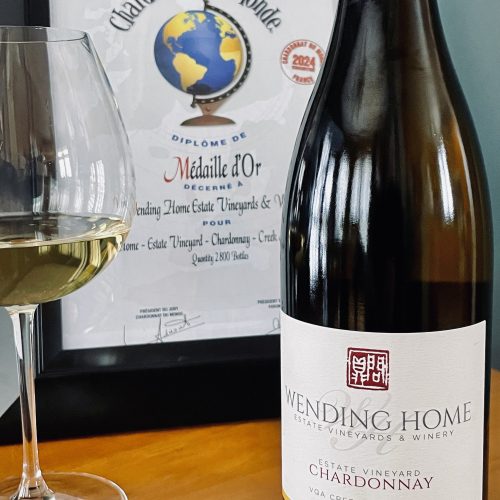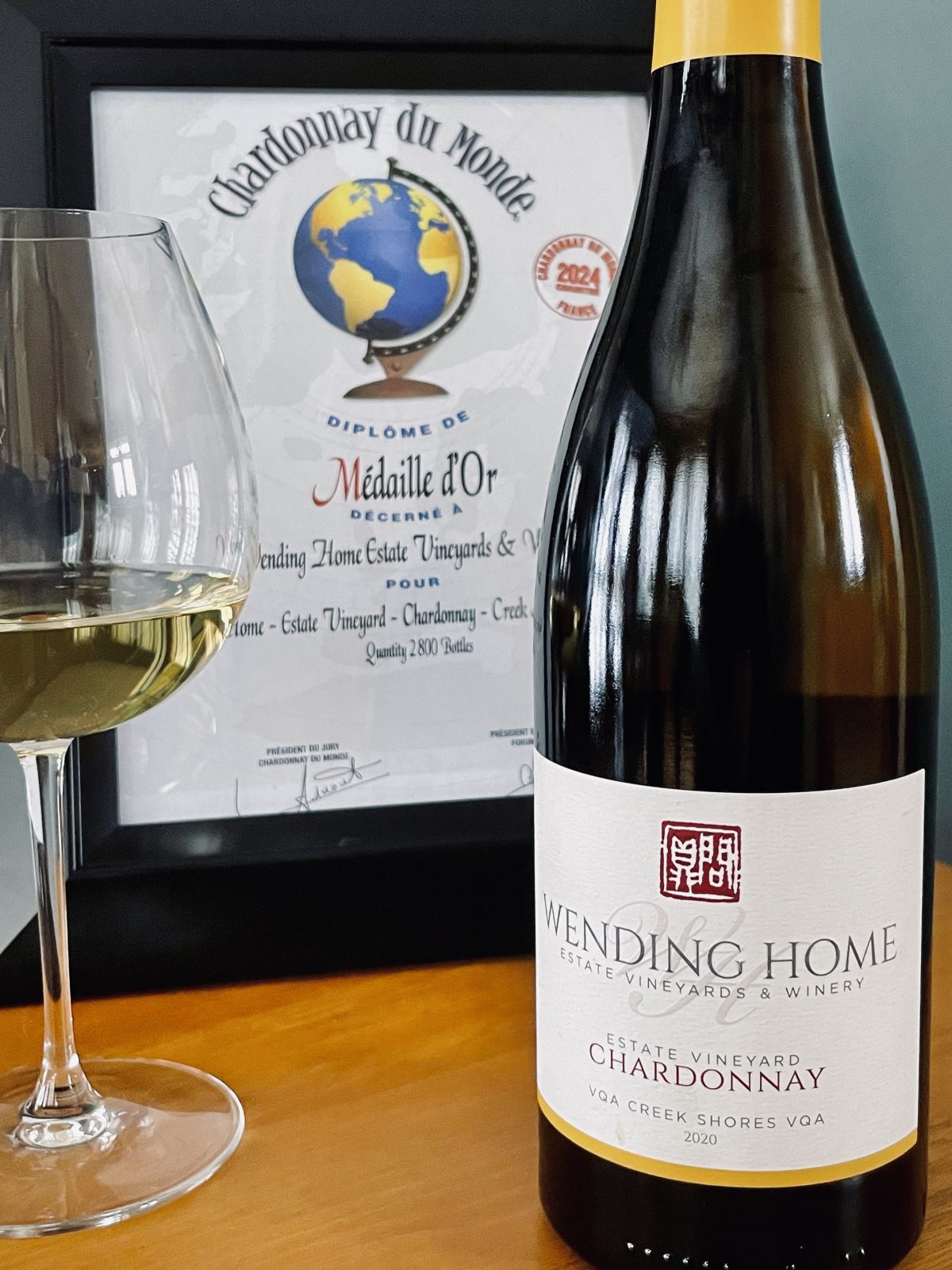2020 Creek Shores Chardonnay picks up medal at 31st annual Chardonnay du Monde in France.
From the St. Catharines Standard
Read the full article here.
The Chinese characters that comprise the logo for the Wending Home Estate Vineyards & Winery wines have a special meaning for manager Ron Giesbrecht and owner Huaying Feng.
The rough English translation for the Chinese characters “Wen” and “Ding” means “to aspire to the throne” or “trying to be the best,” said Giesbrecht, a professor at Niagara College Canadian Food and Wine Institute.

The logo became even more relevant when the winery won a gold medal for the St. Catharines winery’s Creek Shores Chardonnay at a prestigious global wine competition at the 31st annual Chardonnay du Monde in France, where hundreds of wines across the globe compete for recognition.
He said the win was appropriate, because the 2020 vintage from Wending Home vineyards was particularly spectacular.
“It was an extraordinary vintage in 2020. (The year) was a terrible time for us, but a wonderful time to start a winery because of the quality of vintage that year,” said Giesbrecht. “Our logo now rings true when you get an award.”
Giesbrecht, who grew up in nearby Jordan Station, settled on “Wending Home” as the name of the winery. It depicts a homecoming of sorts for the winemaker, but conducted by a meandering path that has led to various wineries across the Niagara region until he found his calling at the Ninth Street facility.
“I like the word ‘wending,’” said Giesbrecht, 65. “It fits my philosophy.”
When he proposed “Wending” as the name of the winery to Feng, Giesbrecht asked what the word means in Chinese. He was pleasantly surprised it meant striving to be better.
“We wanted to have a good rapport with the Chinese community,” he said. “We didn’t want a word that offended anybody.”
The distinctive logo was replicated using a natural stamp made in China, and it can now be found on all of the winery’s bottles.
“(The stamp) is also something traditional that is used to make your work” a sign of quality, said Giesbrecht.
The winery has only been open since 2020 when Giesbrecht and Feng, 55, and her husband Jiannen Li, 74, partnered.
Feng arrived in Canada in 2015 from China looking to purchase land to become a farmer. Along with Li, they bought the property with the 9.3-hectare vineyard on Ninth Street, and built the house in which the on-site retail store is located. The vineyard had been planted in the mid-’80s, so it was a healthy and mature growth.
“I wanted to make some high-quality wine,” said Feng, who was a landscaping engineer in China.
Her husband was a landscape architect.
Feng found herself in Giesbrecht’s wine course at Niagara College and eventually asked him if he would be interested in becoming the winery’s manager.
Giesbrecht has been a professor for about a decade at the college, but for 23 years he was head winemaker at Henry of Pelham, along with other wineries. It was a request that gnawed at him before he accepted.
“I describe it as a kind of an itch that needed scratching,” said Giesbrecht. “I wanted to get back into the business of making wine, in smaller, commercial quantities.”
It’s a decision that is fraught with peril. Giesbrecht said more than 60 per cent of Ontario wineries are losing money. And even the larger wineries, though they are earning revenue, are investing a lot of cash to keep their operations going.
“There are not many wineries that are happy with their earnings,” he said.
The industry continues to battle against higher taxes and imported wines from companies that don’t pay the costs domestic wineries are forced to contribute, he said.
“They are just scraping by. Saying it’s been tough is maybe an understatement,” said Giesbrecht.
The government’s recent support for wineries has been welcome, as is the elimination of the 6.1 per cent tax for wines and wine coolers sold at on-site retailers, said Giesbrecht.
But the VQA program (Vintners Quality Alliance) is a highlight of what can be done to promote local wine, he said. The regulatory system guarantees the high quality and origin for Canadian wines.
“It is an indication of authentication,” said Giesbrecht.
Despite the obstacles, after four years of hard work and an award from a prestigious organization, the winery is still operating, said Giesbrecht.
“We have great wines,” he said. “The medal is an example of that. We don’t enter many competitions, but we wanted to get our name out there.”
The winery has about 16 wines available, and there are “more coming,” including a number of red wines that are aging in a barrel, Giesbrecht said.
“I think I’m very lucky,” said Feng. “I’m very happy making these types of wines.”


